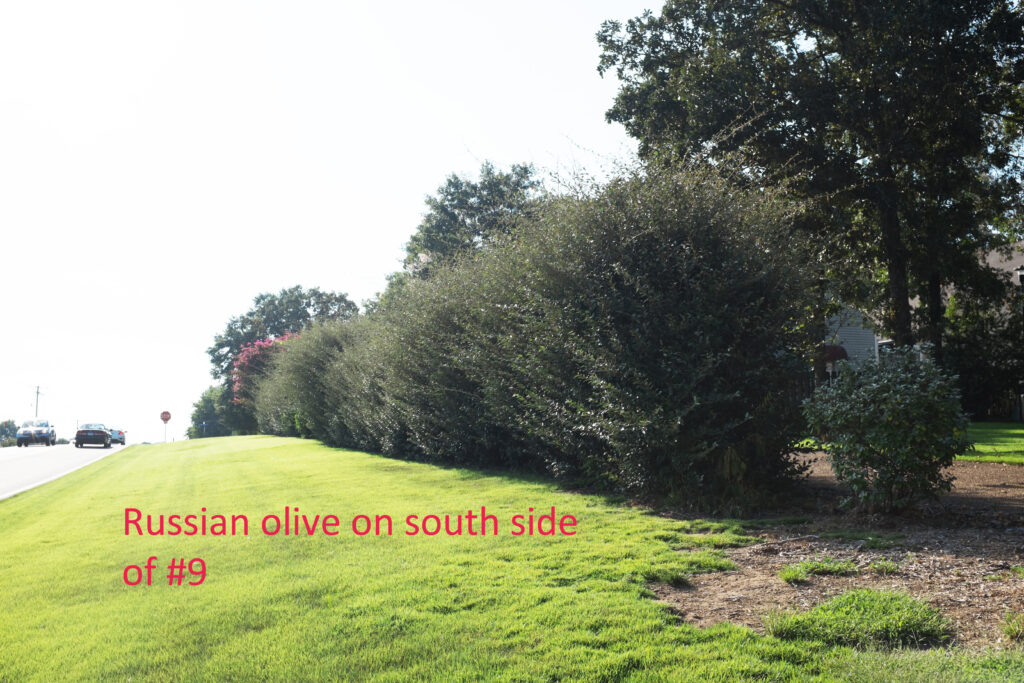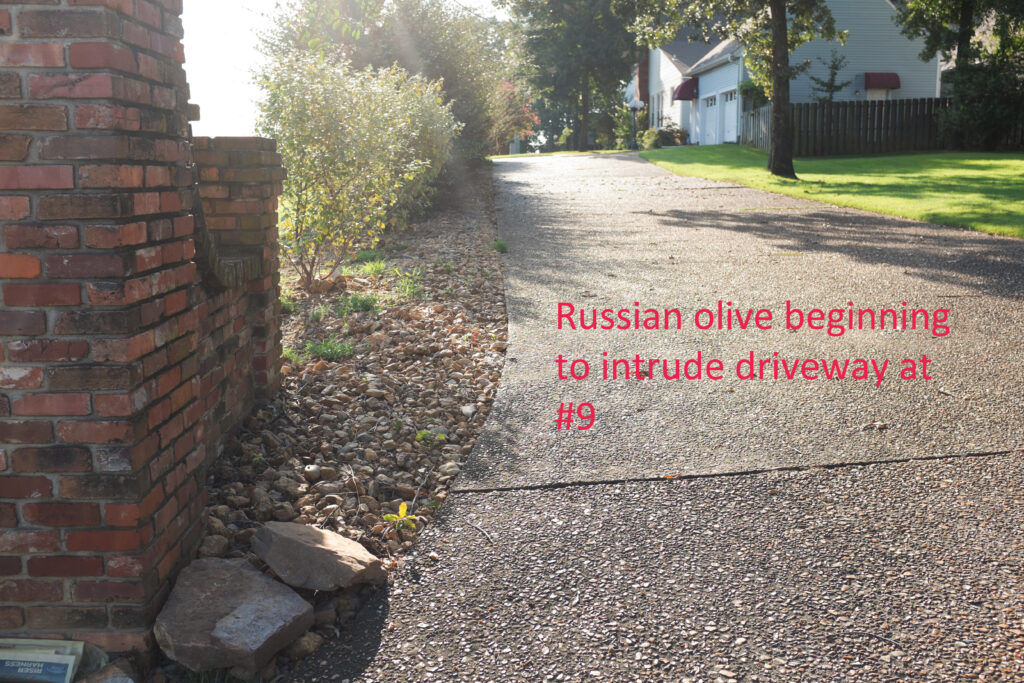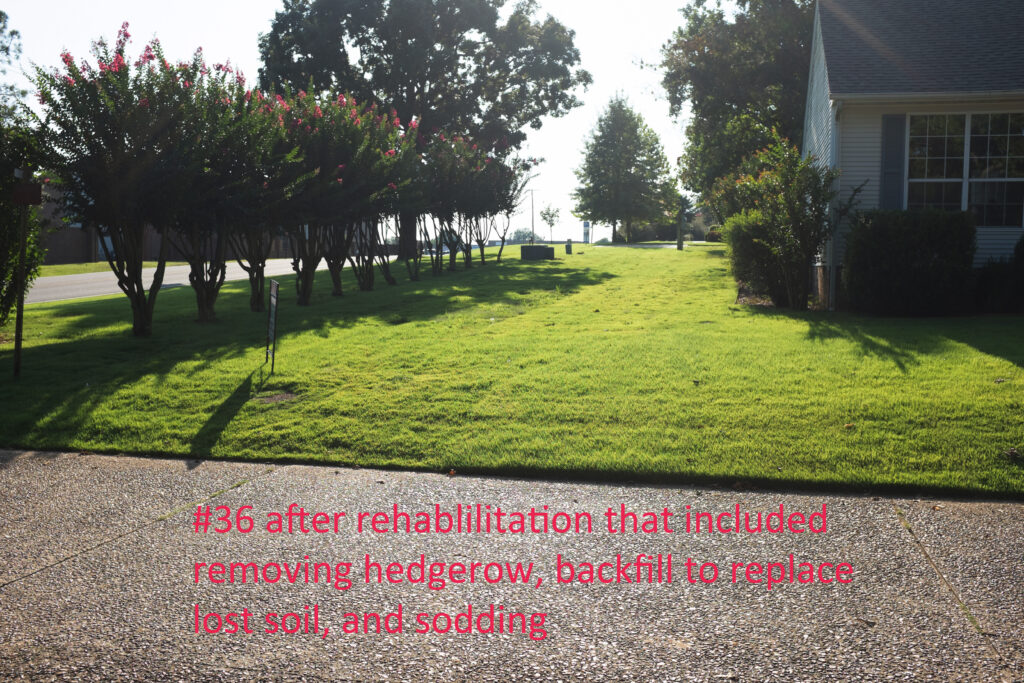Wild Russian
Let me draw your attention to a problem that has existed for years–the Russian olive hedgerow on the south side of #9. For many years this hedgerow was allowed to grow unchecked, to the point that it produced a huge erosion problem along the south side of the driveway to #9. It so invaded the driveway that the owner could only use half the width of the driveway; and, when the owner backed out of the garage, he would have to drive into the hedge.

A couple of years ago we trimmed back the overgrowth that obstructed the driveway; and, since then we have done some maintenance trimming of this Russian olive hedgerow. It still, however, remains a problem. We were able to arrest some of the erosion problem with a bed of weed mat and large gravel. Since the hedge is so large, erosion is still a threat as it prevents the growth of turf grass that would hold the soil in place.

The most glaring problem with this hedgerow is the need for occasional maintenance by professionals, which translates to expense for the Association. Each time it needs trimmed requires many hundreds of dollars (about a $1,000 per trim). This is an expenditure we do not need and can easily avoid. We can eliminate this expense in two ways–have these shrubs cut back to a size that can be maintained by resources in the community (volunteers); or, cut them down completely and replant with the goal of maintaining them in-house.
The most practical and sustainable choice is to cut them down and replant. Although Russian olive are a durable and hardy hedge, they are also very difficult to maintain, requiring frequent pruning to control. If you look at the success of the rehabilitation of the landscape at #36, it is easy to see that such a drastic measure is easy to endure and produces beautiful results. A similar condition of overgrowth and erosion existed at #36 until its hedgerow was taken down and replaced with sod. I think all agree that the transformation was well worth it. A similar prescription is appropriate at #9.

A caution I would like to add here is that we should not replant with more Russian olive, but make a better choice for the future. I suggest that we replant with Pampas Grass. Thanks to Phillip Cypert for introducing us to this beautiful and very useful plant. He enjoyed it when he lived in Florida for many years. It is used there extensively to lay out property borders the way we use woody shrubs (Russian olive) to lay out borders here. If you would like to see examples of Pampas Grass, just look at the end of the street in front of Phillip’s house at #52. Do not be deceived by its looks; it is a formidable guardian. Not only does it grow more and more dense, but its long, slender leaves carry a treacherous hazard. The blades have sharp teeth which can cut exposed skin like a razor and cause irritation.
The most attractive benefit of using Pampas Grass is that it is low maintenance–it only needs pruning once per year and this can be done by local volunteers. Although it is considered as an invasive plant, this can be checked at the time it is pruned. It also does not promote erosion as Russian olive does. It is certainly more pleasing to look at and will not cost us hundreds of dollars (thousands over time) to control.
The Board has hinted that we may need to increase condo fees; we absolutely do not need to discuss increasing condo fees without first talking about eliminating unnecessary financial burdens–like trimming shrubs that we don’t even need.
M Marshall::mmarsha@fastmail.net